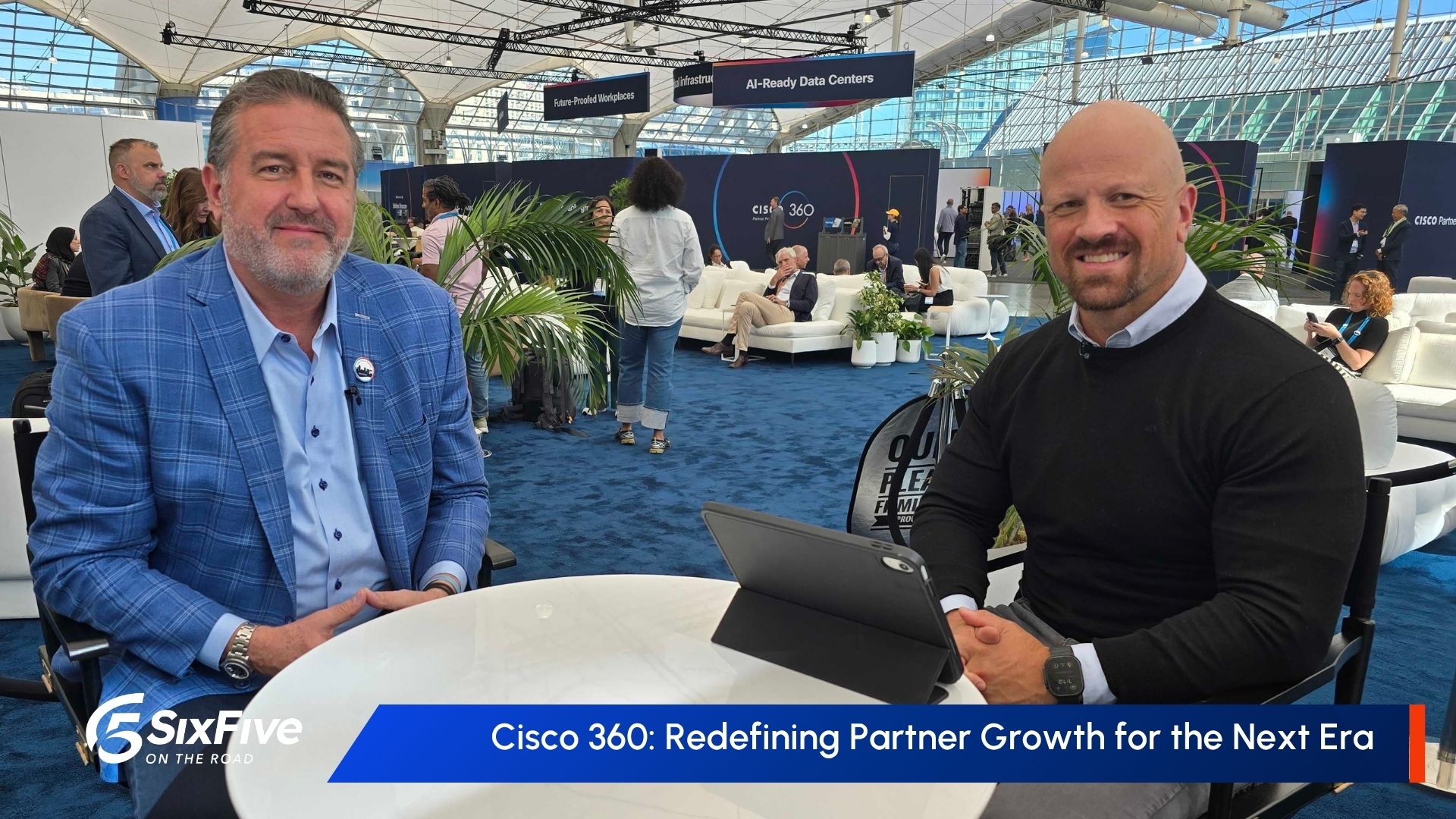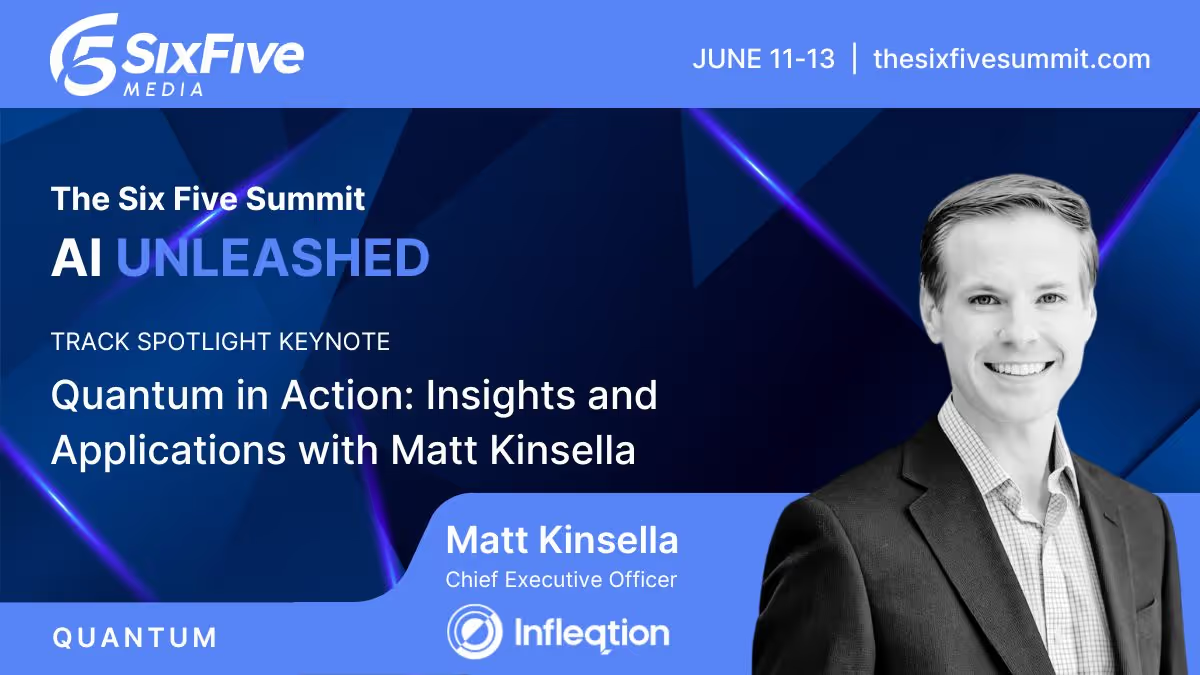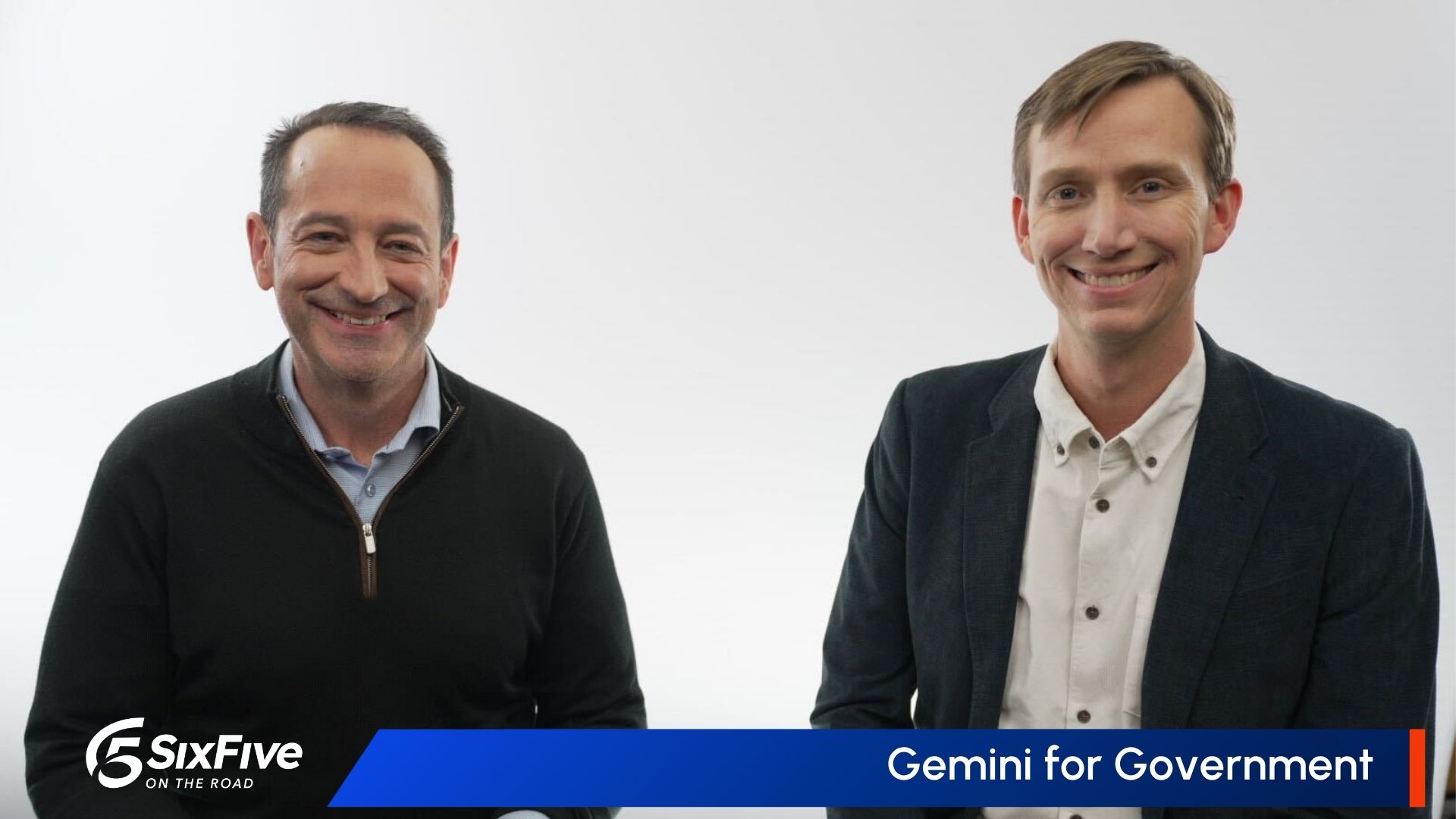Agentic AI Meets the Enterprise: Insights from IBM TechXchange 2025
IBM executives joined Six Five hosts at TechXchange to discuss the latest announcements, AI advancements with watsonx, and how ecosystem partnerships are driving real customer impact—offering a snapshot of key themes and on-the-ground insights.
Is IBM quietly shaping the next era of enterprise AI? 🔍
From reimagining its AI stack with watsonx to forging deeper ecosystem partnerships, IBM is making bold moves, and TechXchange 2025 was the stage for it all.
Join analysts Jason Andersen, Brad Shimmin, and Mitch Ashley as they unpack IBM’s evolving strategy, spotlight breakthrough customer stories, and reveal what’s next for enterprise tech in a hybrid, AI-first world.
Key Takeaways Include:
🔹Major IBM TechXchange Announcements: Analysts recap standout demos and themes, and innovations that set this year’s event apart.
🔹Advancements in watsonx & AI Agents: Insights on how IBM is evolving its AI capabilities and the distinctive qualities of watsonx compared to market competitors.
🔹Real-World Customer Adoption: Hosts share compelling examples that showcase tangible traction, with IBM clients leveraging new AI-driven solutions.
🔹Ecosystem and Strategy: A look at IBM’s overarching strategy within the enterprise tech space, focusing on collaborative partnerships and ecosystem expansion.
🔹Analyst Perspectives & Predictions: Each host shares a final headline or prediction encapsulating their key takeaways from IBM TechXchange.
Learn more at IBM.
Watch the full video at sixfivemedia.com, and be sure to subscribe to our YouTube channel, so you never miss an episode.
Or listen to the audio here:
Disclaimer:
Six Five Media is for information and entertainment purposes only. Over the course of this webcast, we may talk about companies that are publicly traded, and we may even reference that fact and their equity share price, but please do not take anything that we say as a recommendation about what you should do with your investment dollars. We are not investment advisors, and we ask that you do not treat us as such.
Brad Shimmin: Hi everyone, my name is Brad Shimmin. I'm VP and practice lead for Data Intelligence analytics and Infrastructure at The Futurum Group and I am here live with my colleagues Mitch and Jason. They're going to give you some hot takes as a part of our 65 on the road. So I will start us off and this is a conference that is for folks who like to get their fingers on the keyboards and type. And IBM did not disappoint. They spent a lot of time talking about some new tools for their introduction. One of which I made a push out actually about Bob, his name is Bob and it is an agentic development assistant environment that is both CLI and UX that can sit within VS Code or ZED or NEO Yim or whatever editor you like and can basically do what you would do with cursor, flying AIDR, etc. But it's different. And why I'm talking about this is that what IBM is doing is not just generating code, they're generating code into context. And that's unique because there's an idea called literate computing or literate programming. We haven't decided which. That's been going around for quite some time in the industry. And it's the idea that you can write in natural language, in situ, in context in your code and tell the model what you want to do. So I want to add a new feature that is to put a calendar on the number of minutes it takes to read this blog post. Well, normally you would open up a sidebar, type in here Chatbot, please make me a minute counter for the amount of time it takes to do this. It then has to go find the right context. You have to get the file, figure out what's going on in there by instead having you write inside the code and natural language a declarative statement and say please make me a tool widget that does X, Y and Z. The model is able to actually do a couple things. One is to build that new feature right there in private code without having to go find anything, without having to interpret your intent from what you wrote. It also does the things all developer takes what should documentation, documents what you're doing so that down the road, after you've left the company or somebody else has replaced you on a project, they can open up that code being your declarative statement for what you wanted to build and the code that was generated from that right there inside the code. That's a tremendous benefit I think for developers in the enterprise, it speaks beyond content to not just go agentic, but to go agentic in the enterprise. Jason, why don't you have what's up for you?
Jason Andersen: You know, some of you are both getting your hands dirty and AI because those are the two things I wanted to talk about, specifically IBM's Granite model. So last week IBM announced Granite 4 and IBM is contributing a couple of very key points in the LLM world. The first being that small models are very purpose driven and they can actually.Be very efficient compared to some of the larger models that people tend to use on the cloud. So in fact, in the lab session I went to yesterday, we were actually able to run granite floor models locally on our machines and we were building our own local chat box so you could actually see everything private on premise. But the other thing about it that's been very interesting is to see the evolution of the purposes of the various models. So you're starting to see granite embedded models, you're seeing granite models for guardrails. So they're not only small, but they're also very purpose driven. The part that I like about granite success has to be the transparency in the process. When you build the model and you're getting data from everywhere. You saw what happened with say antic recently in the courts where they had to have settlements or inappropriately consume data. You want to be in a position where you want that good farm to table AI where you're taking the data and putting it into the model and training the model focuses. So Granite kind of continues on its path of a more righteous way to do LLMs, but it's also becoming a lot more efficient, which I think is a really powerful story.
Brad Shimmin: So Mitch, what was your take on this?
Mitch Ashley: Actually with the turn head up to anthropic was one part of the announcement.: And actually that was a philosophy of what was behind Bob. You know, IBM made a big deal, appropriately so about understanding the enterprise, but even more so how to get things into production and not just chicken code. Into production, but security guard rails, governors. All those kinds of things. And I was really struck by the fact that I got a chance for SUJ. The agent builder as well as agent orchestra builder is actually inside the orchestra. And the premise is that that's not just building agents. If they're a building agent, they definitely have two ways of looking at it. One was from a low code, no code perspective, kind of a visual layout and this instruction. But the other things you could do without them. And the other is just the development.
Mitch Ashley: I've got agents that I want to orchestrate with very EMCT. Like not really, but what you defined was instituted so that there was discovery and agents could figure out, oh, there's an agent over here that I can talk to and orchestrate that step. But it wasn't as elusive though it could also be very directive on what you want this one to be. Let's say, for example, booking a flight. There's kind of a few tasks for how I might want to do that. I don't need to scour the university LLM to figure out a good way to do that. Of course you want to present something to the individual listing your classes both with some backlink code. Java I think is actually high on them. Code and the UI to build it and putting up ones and coins music and doing plays and that's the language kind of. So I think orchestrating turns out to be a big deal. More and more agents work as we. Use different things in our production and somebody's going to say how are we going to know what they're doing and what they're doing? Well, it's been a great conference and it's also always great to get together as panelists.
Brad Shimmin: I agree. That's the only place we don't need each other in the Office. We don't need each other on the right.
Mitch Ashley: It's been a great time and next time we'll have to do some predictions of what we think. Yeah. Thanks for joining us on Six Five On the Road.
MORE VIDEOS

Cisco 360: Redefining Partner Growth for the Next Era - Six Five On The Road
Tim Coogan, SVP Global Partner Sales at Cisco, joins Six Five hosts to share how Cisco 360 is redefining partner growth—focusing on transparency, profitability, and actionable steps partners can take today to prepare for the next era.

Why AI Needs a New Network – Six Five On The Road at the Cisco Partner Summit
Will Eatherton, SVP of Infrastructure Engineering at Cisco, joins Matt Kimball to discuss how Cisco and NVIDIA are advancing AI network infrastructure—offering new ways for enterprises to scale smarter with platforms like Nexus Hyperfabric AI.
Other Categories
CYBERSECURITY

Threat Intelligence: Insights on Cybersecurity from Secureworks
Alex Rose from Secureworks joins Shira Rubinoff on the Cybersphere to share his insights on the critical role of threat intelligence in modern cybersecurity efforts, underscoring the importance of proactive, intelligence-driven defense mechanisms.
QUANTUM

Quantum in Action: Insights and Applications with Matt Kinsella
Quantum is no longer a technology of the future; the quantum opportunity is here now. During this keynote conversation, Infleqtion CEO, Matt Kinsella will explore the latest quantum developments and how organizations can best leverage quantum to their advantage.

Accelerating Breakthrough Quantum Applications with Neutral Atoms
Our planet needs major breakthroughs for a more sustainable future and quantum computing promises to provide a path to new solutions in a variety of industry segments. This talk will explore what it takes for quantum computers to be able to solve these significant computational challenges, and will show that the timeline to addressing valuable applications may be sooner than previously thought.





